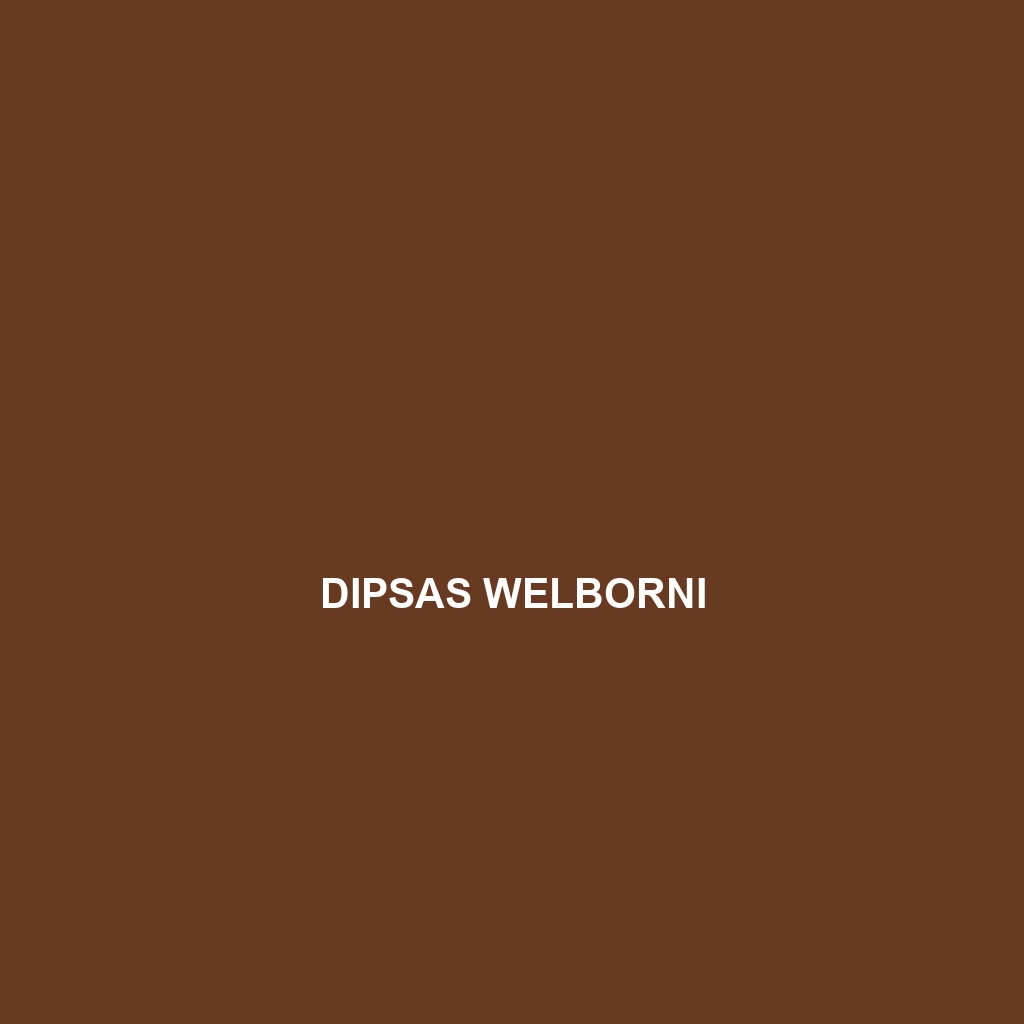Common Name
Dipsas viguieri
Scientific Name
Dipsas viguieri
Habitat
Dipsas viguieri, commonly known as Viguier’s snail-eating snake, is primarily found in a variety of tropical environments across Central and South America, including regions of Costa Rica, Panama, Colombia, and Ecuador. This species predominantly inhabits rainforests and adjacent wet forests, showcasing a preference for areas with dense vegetation that offer ample cover and hunting opportunities. These snakes thrive in humid climates, where temperatures average between 20°C to 28°C (68°F to 82°F), and they are often found in areas near water sources, which further supports their ecological role. The vegetation in these habitats plays a vital role in their survival, providing both shelter and hunting grounds.
Physical Characteristics
Dipsas viguieri exhibits distinct physical characteristics that make it easily identifiable. Adults typically reach lengths of about 1 to 1.5 meters (3 to 5 feet). Their body is slender and elongated, which aids in navigating through dense foliage. The coloration of the snake can vary, but they are generally characterized by a light brown or tan body adorned with dark brown blotches that run down the length of their back. This color pattern serves as effective camouflage among the leaf litter and branches of their forest habitat. Another notable feature is their relatively large head compared to their body, which is adapted for swallowing their preferred prey—snails.
Behavior
Diet
Dipsas viguieri is considered a specialist feeder, primarily consuming snails and other soft-bodied invertebrates. They are classified as carnivores, relying on their keen sense of smell to locate their prey. Their unique dentition allows them to grasp and extract snails from their shells. In addition to snails, they may also consume slugs or small worms, expanding their dietary range minimally. Feeding typically occurs after sundown, and they utilize their stealth to ambush unsuspecting prey.
Reproduction
The reproductive cycle of Dipsas viguieri involves a fascinating set of behaviors during the mating season, which usually peaks in late spring to early summer. The gestation period for this species can last up to three months, after which females give birth to live young, a characteristic known as ovoviviparity. Clutch sizes can vary, but females typically give birth to 4 to 10 offspring at a time. The young are approximately 20–25 cm (8–10 inches) long at birth and are independent from the moment they are born. Parental care is non-existent, as the young must fend for themselves immediately after emergence.
Conservation Status
Currently, Dipsas viguieri is classified as Least Concern by the International Union for Conservation of Nature (IUCN). Despite this relatively stable status, the species faces threats from habitat destruction due to deforestation, agricultural expansion, and climate change. Conservation efforts are crucial to preserve their natural habitat, and ongoing monitoring is necessary to ensure that their populations remain healthy. Local conservation programs aiming at preserving rainforest habitats are vital in safeguarding this remarkable species.
Interesting Facts
One of the most interesting aspects of Dipsas viguieri is its extraordinary adaptation to a diet primarily composed of snails, which is quite rare among snake species. Their ability to locate and consume these mollusks demonstrates their ecological niche. Interestingly, the snake’s undulating movement is often accompanied by a rhythmic sway, which adds to the charm of its behavior as it navigates the forest floor in search of food. Additionally, Dipsas viguieri possesses a defensive behavior where it may play dead if threatened, a behavior that can confuse potential predators.
Role in Ecosystem
Dipsas viguieri plays a crucial role in its ecosystem as both a predator and prey. As a consumer of snails and other invertebrates, it helps regulate these populations, contributing to the balance of species within the forest. Furthermore, it serves as prey for larger predators, including birds of prey and larger snakes, thus contributing to the trophic dynamics of its habitat. By maintaining the health of its population and controlling the populations of snails, Dipsas viguieri plays an important part in sustaining the overall ecosystem health.
